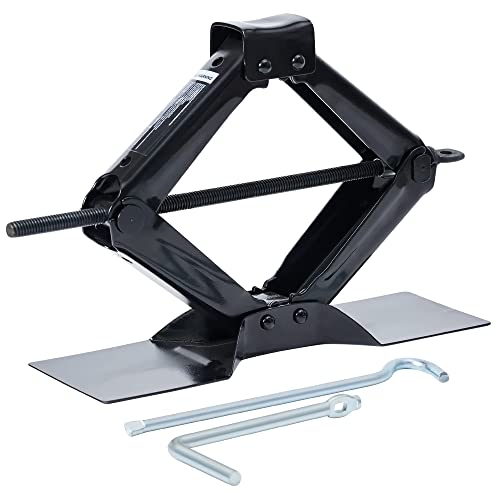Jacking up a car may appear simple, but important to do it correctly to avoid damaging your vehicle. We inquired from experts, and here are facts we discovered about car jacks.
Yes, it is safe to jack up your car on one side if you do so on a flat surface. Attach your jack to the front or back jack points, which are far more sturdy and stiff than jacking up on either the left or right side.
We will go through how this car jack work and the different types of car jacks. As well as how to properly utilize and maintain your car jacks. So, keep reading!
Can You Jack Up Your Car On One Side?
Yes, you can jack up one side of a car at a time. However, if you do so, you must take certain precautions. Otherwise, misalignment or serious injuries could occur. You should know that the most secure jack points are underneath the various pumpkins or cross members.
To jack your car safely, it is recommended to do so at the intersection of steel structures. The chassis rail and the support part at the back end are known for being tough and rigid. Ensure that the jack's head plate, which bears the weight, is positioned squarely between the load and the jacking point.
How Does A Car Jack Work?
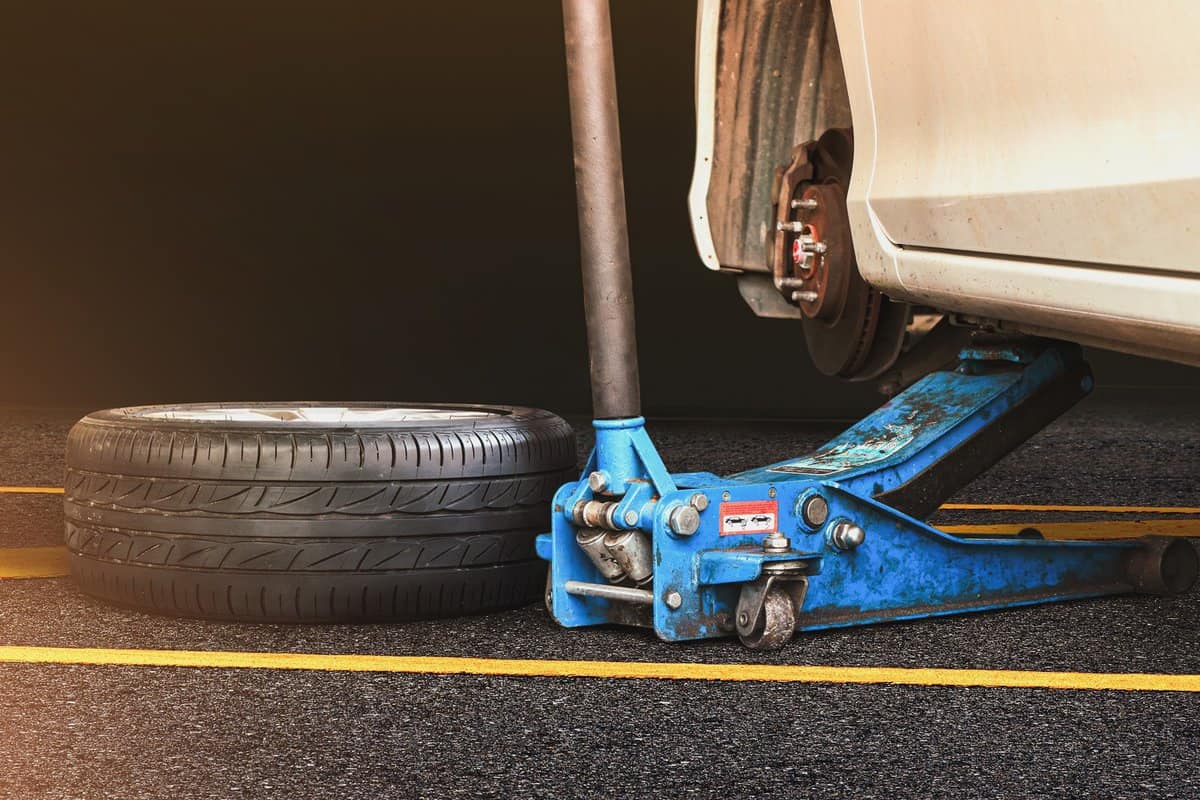
Car jacks operate primarily through mechanical, pneumatic, and hydraulic mechanisms. Let's go over them in great depth below.
Mechanical Jacks
These car jacks work by applying a simple mechanical force to a vehicle. A mechanical car jack will use a ratcheting system to lift the vehicle slowly. When a screw jack unit operates, the worm shaft rotates, causing the worm gear to revolve.
The lead screw is connected to the worm gear and rotates at the same speed as the screw jack. The friction forces on the screw thread turn the nut as the worm gear rotates.
Hydraulic Jacks
Hydraulic cylinders are positioned horizontally or vertically to lift larger objects. These jacks have an oil reservoir with a pressure that pushes the cylinder higher. The jack will compress as the oil returns to the reservoir.
Pneumatic Jacks
Pneumatic jacks use compressed air to lift and position types of machinery and heavy objects easily. This type of car jack, sometimes known as a "telescope jack," is widely used in the heavy machinery repair industry to raise buses, trucks, and construction vehicles. Pneumatic jacks are not suitable for small cars.
Click to see this pneumatic jack on Amazon.
Different Types Of Car Jacks
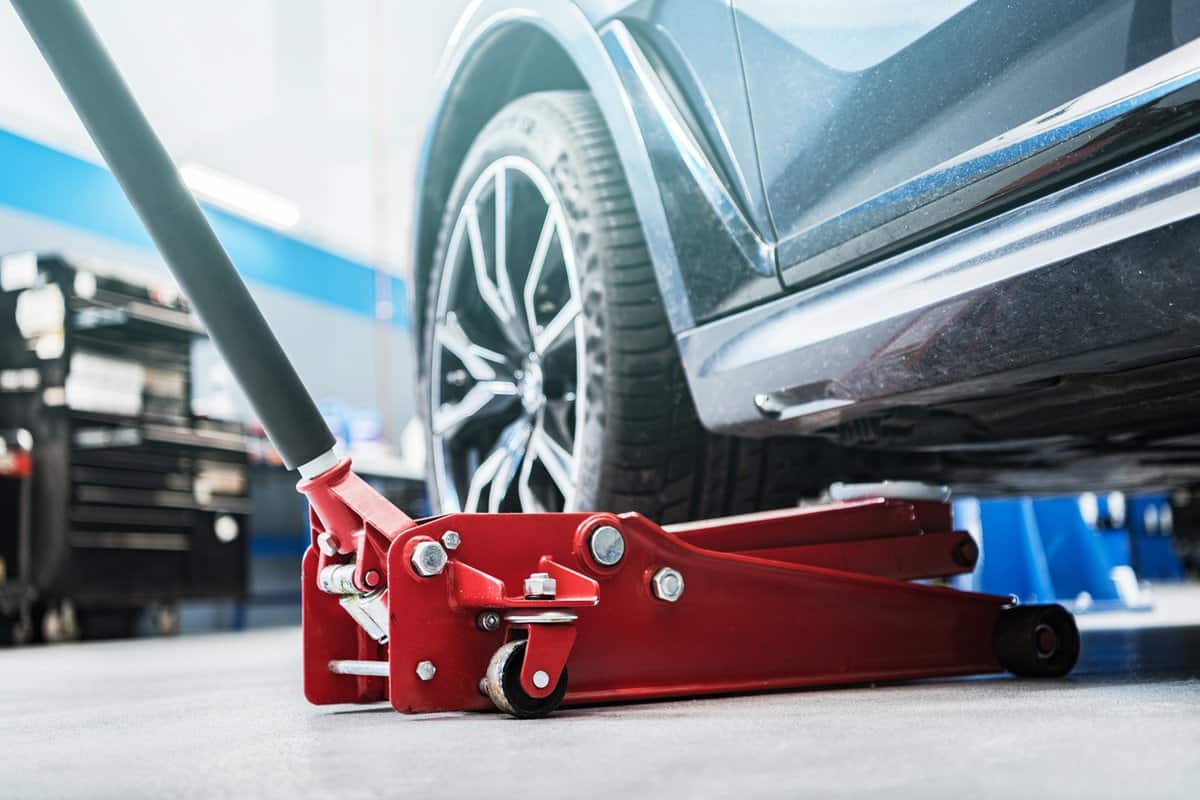
The most common car jacks are:
Floor Jacks
This type of car jack is the most common and popular variety and is excellent for car maintenance because of how easy and convenient it is to use. The floor jack assists you in lifting the vehicle while working beneath it. They operate on the same concept as hydraulic jacks.
Floor jacks feature large steel wheels that allow them to roll beneath the car. The jack's hydraulic pressure enables you to elevate a portion of the vehicle using a hand lever. Some models may include a release valve on the handle's top.
Click to see this Floor Jack on Amazon.
Scissor Jacks
A scissor jack is also known as a jackscrew due to the way it functions. These jacks raise the vehicle by screwing in the sides of the jack in a squeezing, scissor-like motion.
They are typically used on smaller vehicles because they are the most popular and straightforward variety. It is small and portable and can fit into a small area.
Click to see this scissor jack on Amazon.
High-Lift Jacks
The high-lift jack is not designed to be used on all cars or in all situations. It is only required when the maximum lift is needed, which is typical for off-roaders and trailer owners. They are not commonly found in garages.
High-lift jacks have a very small footplate, making them exceedingly unstable. To avoid mishaps, operate the high lift jack with extreme caution and care, or delegate it to a professional. In general, if you are not an off-roader, you do not need a high-lift automobile jack.
Click to see this high-lift jack on Amazon.
How Do You Safely Jack Up Your Car?
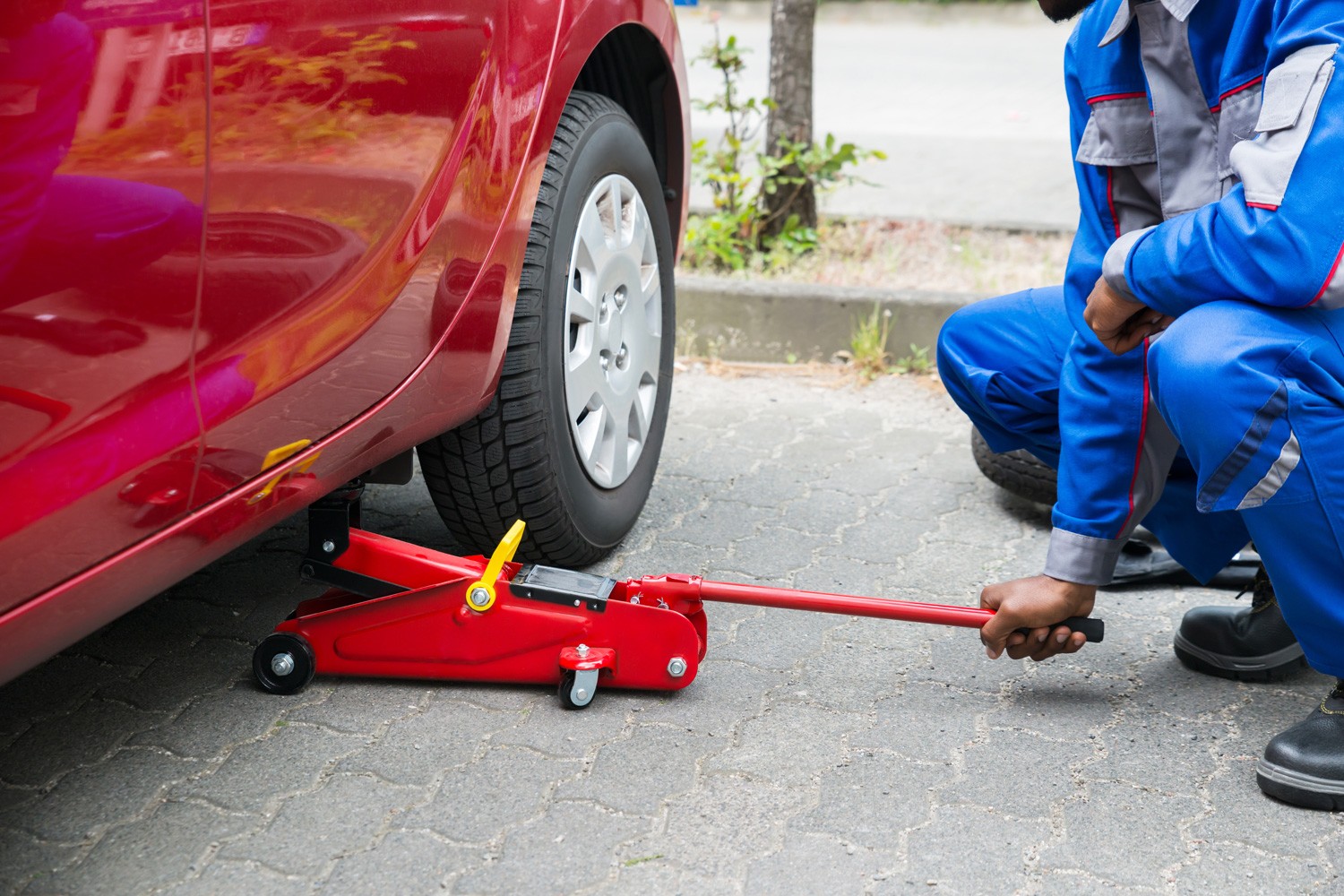
Knowing how to lift and support your vehicle securely enables you to execute various additional DIY tasks, such as changing your oil, brakes, or tires.
Here's a quick rundown of the"> steps you should take before jacking up your vehicle.
1. Park Your Vehicle On A Level Surface
Find a flat surface to park your vehicle. Never attempt to lift a car on uneven surfaces, a soft surfaces, or debris such as rocks or gravel. Take advantage of a concrete driveway or garage floor. Do not jack up your car on the side of the road.
2. Choke The Wheel
Put your car in park if it is automatic. Set it to first gear if it's a standard. Then, set your parking brake and place a chock on the remaining wheels. It keeps the car stationary as you jack it up and adjust the stands.
3. Locate Your Vehicle's Jack Point
You can find various locations on the vehicle body where you can jack it up securely. If you lift the vehicle anyplace other than those spots, it may damage the car frame or slip off the jack. The location of the jack points should be specified in your owner's manual.
There is usually a jack point on each side near the rocker panels. Specifically, they are behind the front wheels and in front of the rear wheels. Behind the bumpers, there could be central jack points. Jack points are typically flat metal regions with notches in the shape of a jack's top.
4. Place The Jack
Place the jack just beneath the jack point. Ensure that the correct side is facing up. The specific procedure for raising the jack depends on your jack type.
Regardless of the jack type, you can make the last changes to the jack's position as you raise it to ensure it is appropriately aligned with the jack point.
5. Lift Your Car
Raise the jack until the car's corner lifts off the ground. Stop when the car has enough space for you to crawl beneath and work. While shifting the car, listen for unusual sounds or movement, and double-check that the vehicle is still in the jack's position. Never put any part of your body under the car while raising it.
6. Place The Jack Stand
Place the jack stand on the underside of the car frame next to the jack. When utilizing a jack stand, set it under the jacking point, adjust the height of the stand, and secure it with a pin or screw as directed. When the jack stand is in place, slowly lower the car to rest on it.
7. Lower The Car When Done
When you've finished working under the vehicle, slowly lower the vehicle and then remove the jack. Before lowering the jack, make sure the jack stands are removed.
How To Properly Maintain Your Car Jacks?
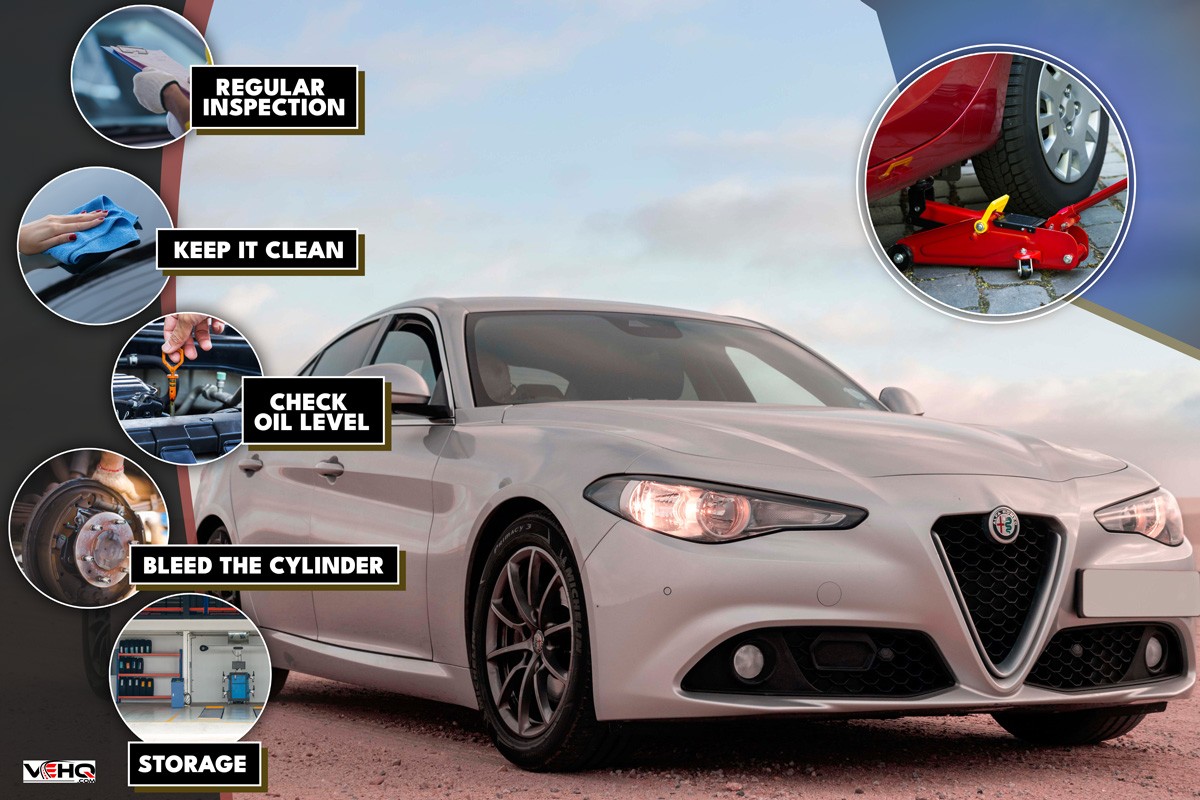
Any car jack will last for years if properly maintained. Car jack maintenance is easy and only takes a few minutes.
Regular Inspection
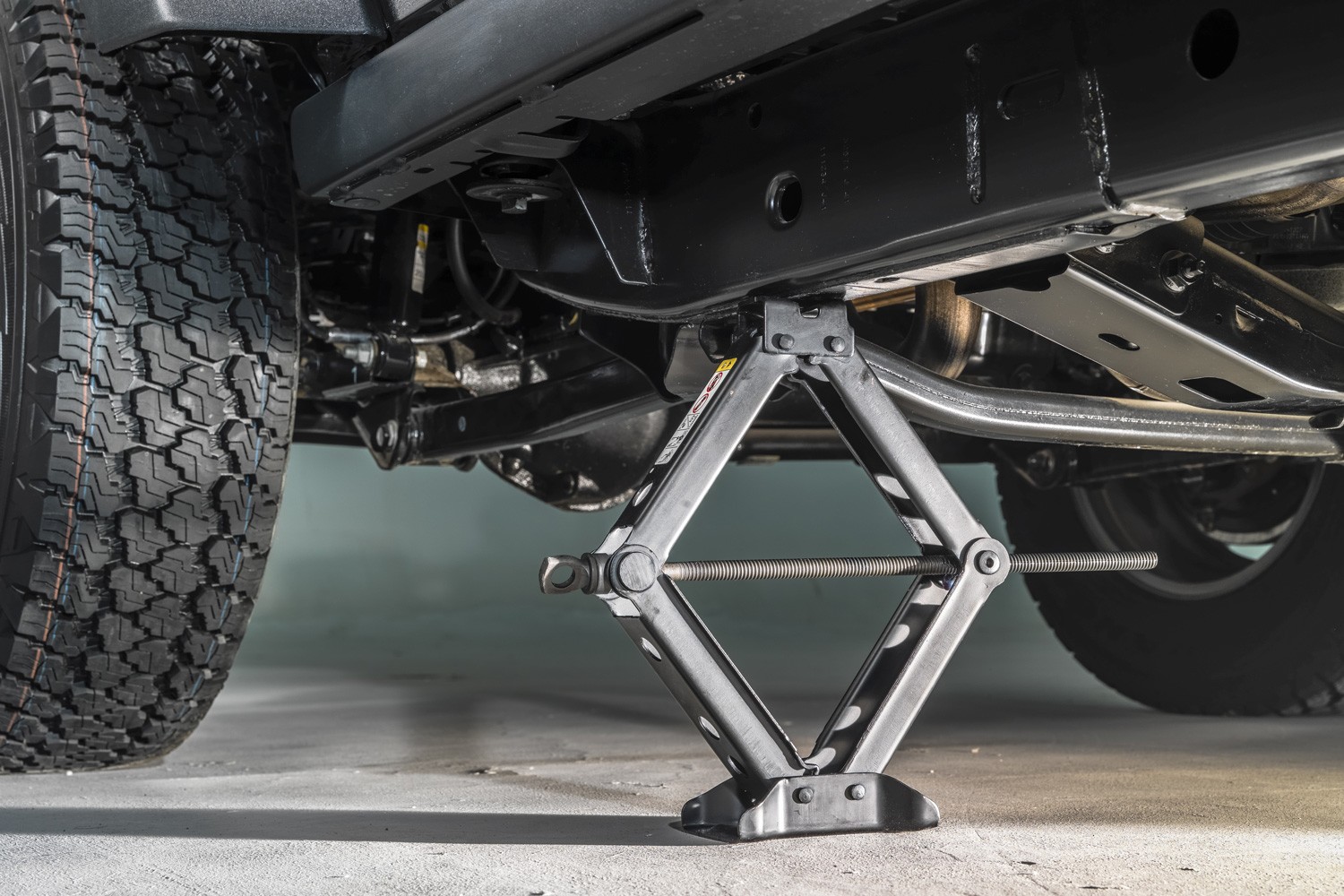
Regular checks should be a part of your upkeep. Examine the storage area of the jack for any signs of fluid leaking, and inspect the housing for cracking or rust. Don't forget the piston rod for scoring or other damage.
Check to determine if excessive wear in any area could cause an issue. Keep an eye out for any foreign things that could cause damage to the unit if not removed before usage.
Keep It Clean
A dirty jack will break and malfunction. A typical cause of jack failure is dirt. Using a jack in an outdoor area can cause water, sand, snow, grit, or other foreign objects to accumulate it. They make their way into the system and contaminate it if not wiped off quickly enough.
Check Oil Level
Check the oil level, but only add more if the rod is difficult to move. Ensure you apply oil to the correct port, typically on the power unit's side. It's a simple mistake that might leave you with a jack that needs to be fixed.
Bleed The Cylinder
You must change the hydraulic jack's oil regularly. Remember to bleed the system's air after completion as part of regular maintenance.
Storage
Before storing the jack cylinder, always remove all pressure in it. It relieves stress on the system and keeps it running longer. Additionally, it saves time setting it up and takes up less storage space. To avoid potential leaks and jack malfunction, always store it upright.
Conclusion
Jacking up your car is relatively easy if you know where the jacking points are. If you jack up your vehicle on one side at the jack point, ensure it is stable and the jack is capable of handling your car.
If you found this post helpful, check out these related articles:



